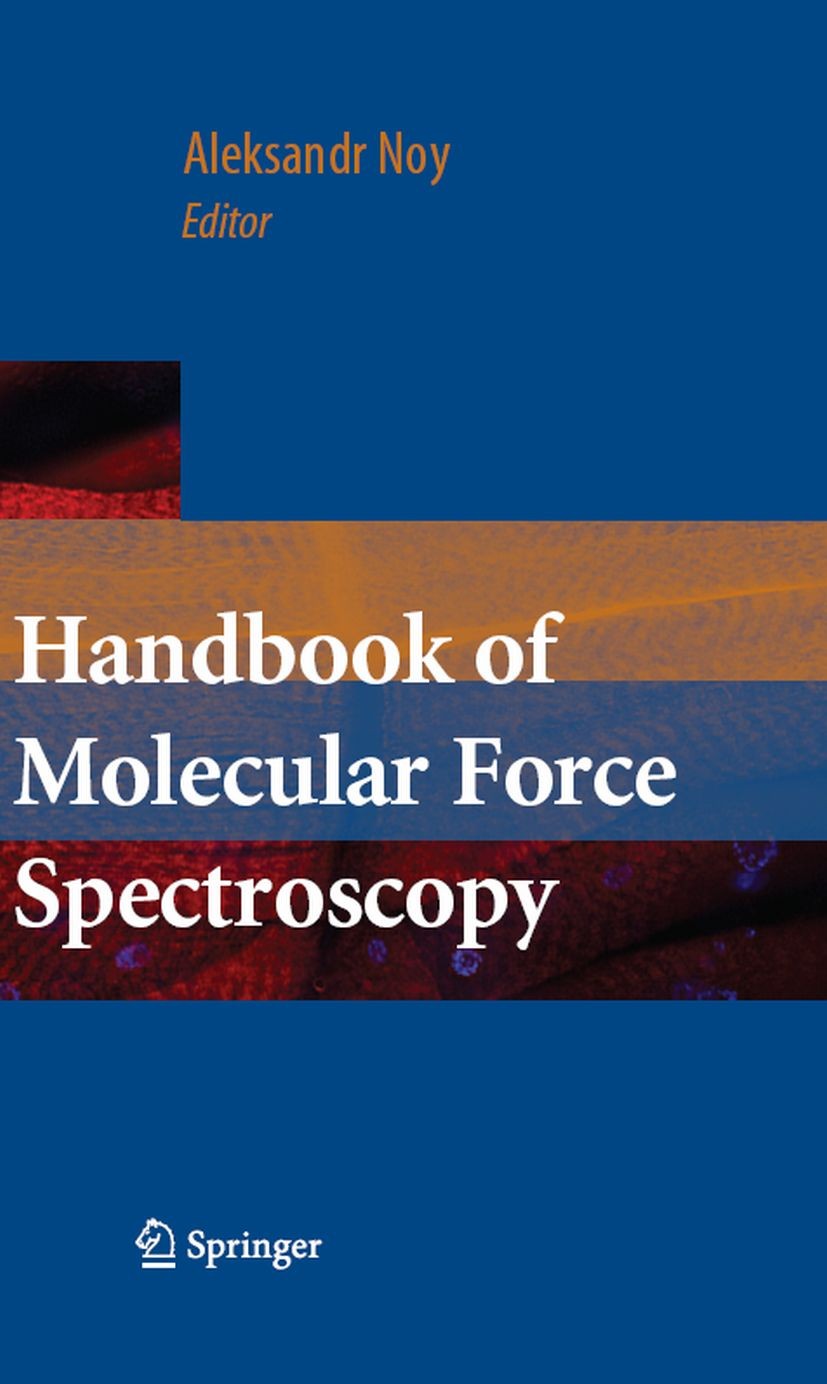| 书目名称 | Handbook of Molecular Force Spectroscopy |
| 编辑 | Aleksandr Noy |
| 视频video | http://file.papertrans.cn/422/421686/421686.mp4 |
| 概述 | Provides an authoritative guide to planning, understanding, and analyzing modern molecular force spectroscopy experiments.Presents state-of-the-art research at the nanoscale and single-molecule levels |
| 图书封面 |  |
| 描述 | .Modern materials science and biophysics has increasingly focused on studying and controlling intermolecular interactions on the single-molecule level. The peer-reviewed literature contains an increasing number of studies that either measure the interaction forces directly or use mechanical forces to deform the molecules or trigger structural transitions. Molecular force spectroscopy is the result of unprecedented advances in the capabilities of modern force measurement instruments in the past decade and describes a number of techniques that use mechanical force measurements to study interactions between single molecules and molecular assemblies in chemical and biological systems. Examples of these techniques include atomic force microscopy, optical tweezers, surface forces apparatus, and magnetic tweezers. These techniques typically target a specific range of experimental systems and geometries, but all use mechanical force transducers to apply and detect nanonewton range forces between single molecules in condensed phases. ..Molecular force spectroscopy measurements have been very important for studies of adhesion and friction forces, where they provided the first truly nanoscale |
| 出版日期 | Book 2008 |
| 关键词 | Biophysics; LEED; PAS; REM; STEM; elasticity; microscopy; modeling; polymer; proteins; spectroscopy |
| 版次 | 1 |
| doi | https://doi.org/10.1007/978-0-387-49989-5 |
| isbn_softcover | 978-1-4419-4323-1 |
| isbn_ebook | 978-0-387-49989-5 |
| copyright | Springer-Verlag US 2008 |
 |Archiver|手机版|小黑屋|
派博传思国际
( 京公网安备110108008328)
GMT+8, 2025-12-28 08:55
|Archiver|手机版|小黑屋|
派博传思国际
( 京公网安备110108008328)
GMT+8, 2025-12-28 08:55


